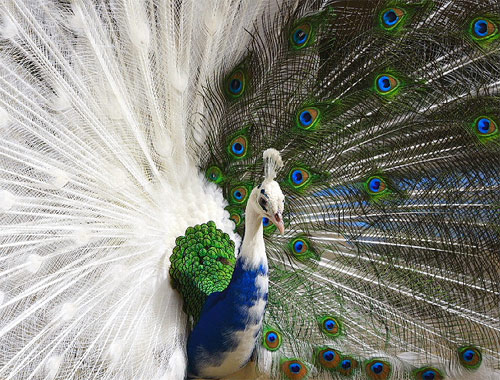
Chimeraism is a condition in which two separate zygotes fuse together to form one organism. The resulting animal has two different sets of DNA (unless the zygotes that fused were identical twins). Occasionally, this causes mosaicism - when different phenotypes are expressed in different areas.
The problem with chimerasism is that it's impossible to confirm without genetic testing, as is the case with the peacock pictured here. It's been doing the rounds on forums for years, and always causes a lot of debate. Some claim that it's a case of co-dominance, others argue that we're looking at a chimera. Without genetic tests, it's impossible to say for sure.
A common question that was asked on our last post on chimeraism was - are there any human chimeras around? The answer is a resounding yes - and it's a hell of a lot more common than you might think. Although you occasionally get some spectacular colour patterns on chimeras like those pictured, most of the time you'd never be able to tell by looking.
The British Medical Journal first reported a human chimera in 1953. A woman was found who had two different blood types - investigation found that this was the result of cells from her twin brother living within her body. A study published 1998 (available free online, found here: http://citeseerx.ist.psu.edu/viewdoc/download?doi=10.1.1.149.9001&rep=rep1&type=pdf found that this sort of blood group chimeraism is actually fairly common.
No comments:
Post a Comment